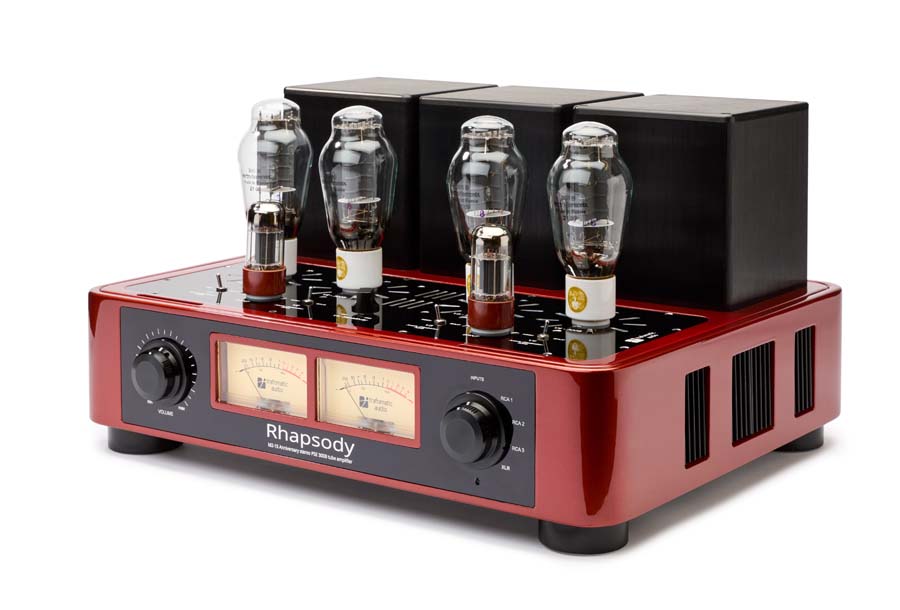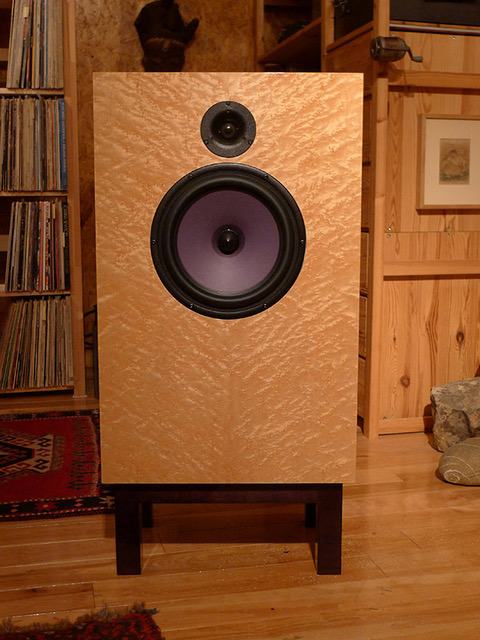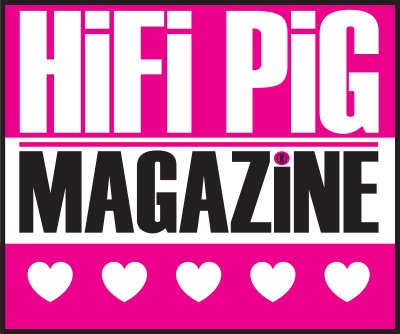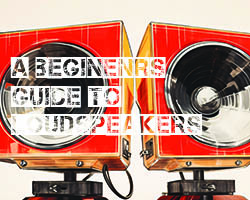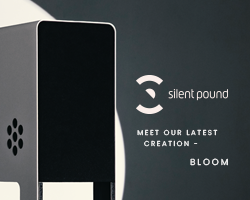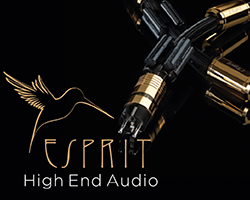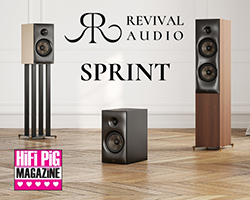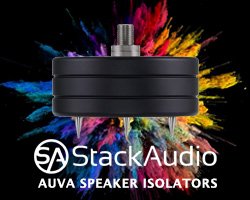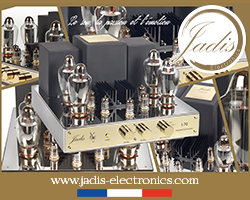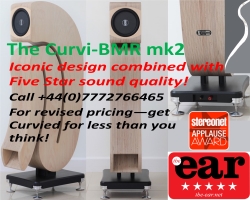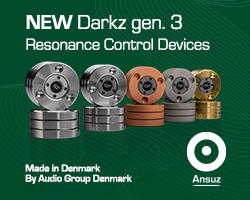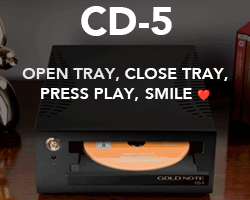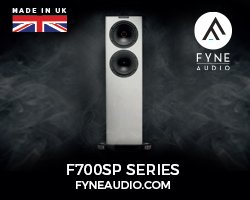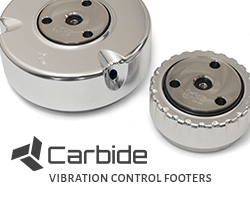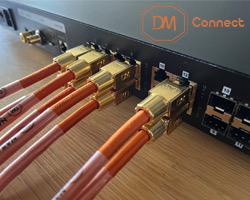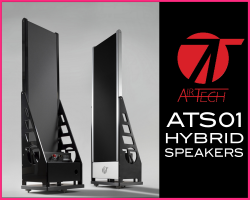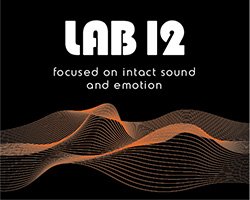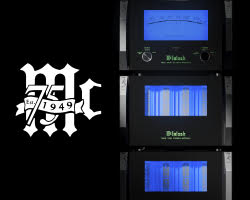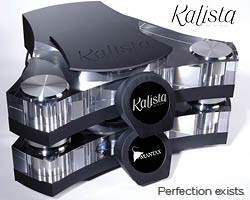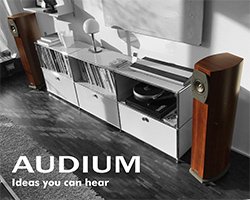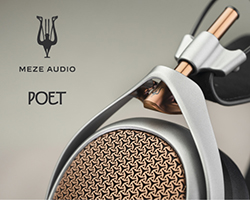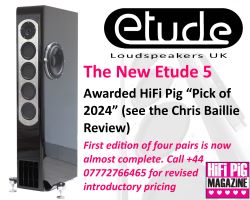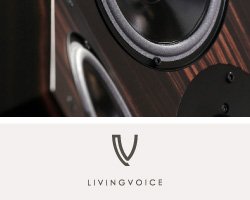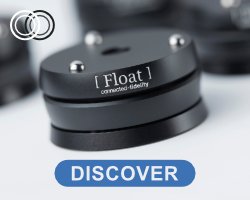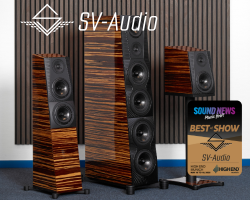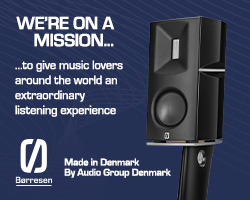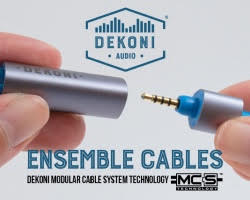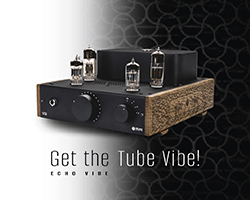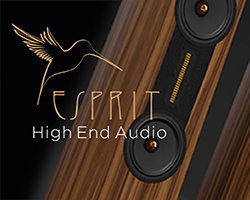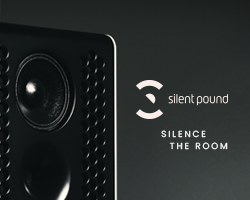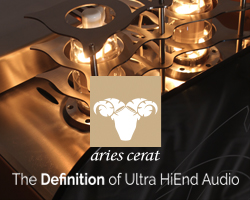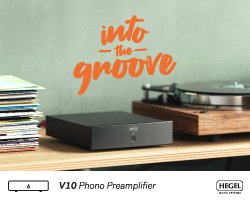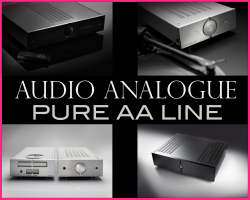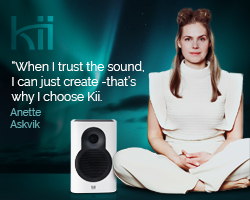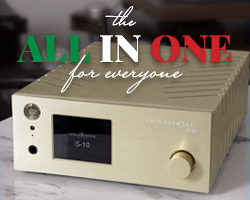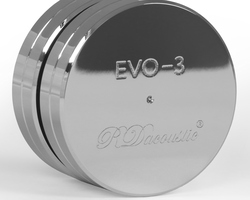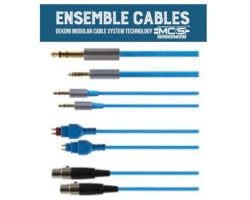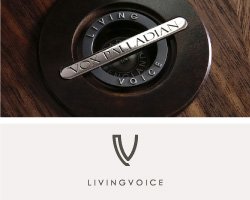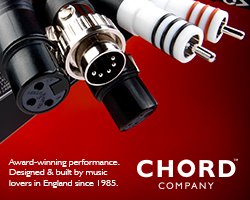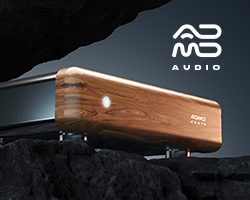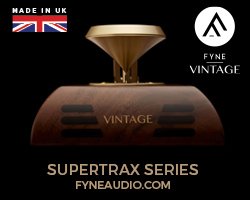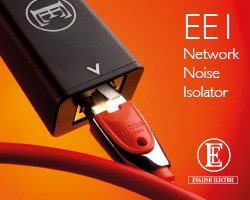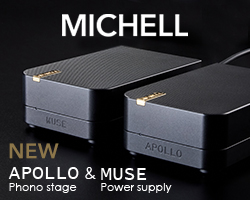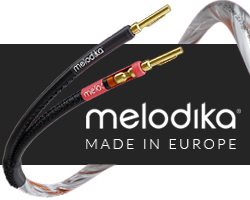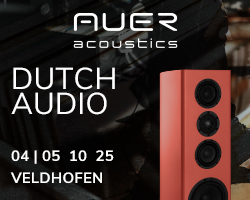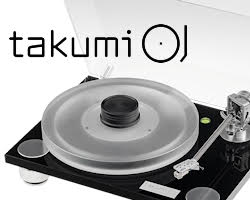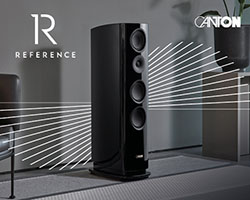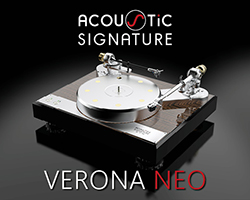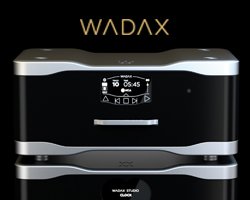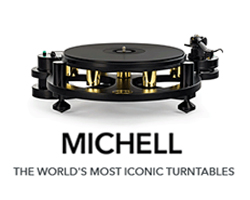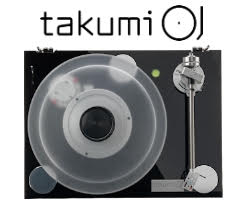TRAFOMATIC RHAPSODY INTEGRATED AMPLIFIER AND DEVORE ORANGUTAN O/96 LOUDPEAKERS REVIEW
Trafomatic Rhapsody integrated amplifier and DeVore Orangutan O/96 speakers are part of Absolute Sounds’ 天 (Ten) range of components, a range put together by Ricardo Franassovici to highlight artisanal audio at its best. Janine Elliot takes a listen to this £37K combo for HiFi PiG and loves what she hears.
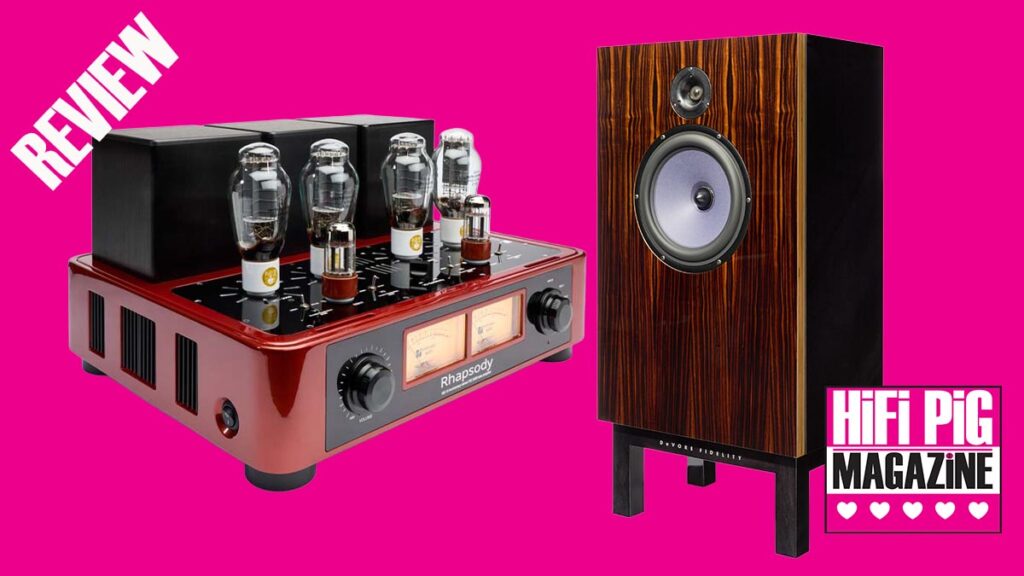
“Janine, we’d like you to review this amplifier and speaker system” I was asked. Normally I select my own amps or speakers if the other is already decided upon. However, this duo of Trafomatic Rhapsody 300B tube integrated and beautiful DeVORE Fidelity O/96 is actually a brilliant pairing, and something I was quite excited about welcoming to my living space. I’ll explain why later.
The Rhapsody arrives from Serbia and comes in at £19,998, which might seem a lot until you actually have a look at it. This is a beautiful amplifier, and with other companies like Auris, Karan and Audio Lab, shows how important Serbia is to today’s HiFi world.
Set up originally as Trafomatic Ltd by guitarist Saša Čokić and Milorad Despotovic in 1997, they began making toroidal transformers and electronics, turning to building audio amplifiers in 2007 as Trafomatic Audio. I remember reviewing their Belus power amp in 2014. Unlike that amplifier which covered up the valves inside, this amplifier only has a Perspex screen in front to protect you from touching anything hot when you turn the knobs, so you can still look at the valves as an item of beauty, just as we used to stare at glowing candles when we were young or perhaps in church.
Paired with this are the £16,998 (starting price) DeVORE Fidelity Orangutan O/96 loudspeakers. These are beautifully designed with a truly lovely front baffle. The company was set up by John DeVore in 2000, another experienced musician of many years who has also had many years of designing speakers and working in the HiFi industry. The company resides in Brooklyn, NY, America. He has two ranges of speakers; the Gibbon and the Orangutan. All have very distinctive, beautiful birch baffles, and the speaker for review reminds me somewhat of AudioNote (UK) speakers in their simplicity and beauty. These are very different to the AudioNote (UK) speakers, though.
THE PAIRING AND 天
The reason for these two items being united for this review is quite simple: the Rhapsody is a four-300B parallel Single Ended (Class A) amplifier that delivers just 20W per channel. By today’s standards, that isn’t a lot, though my 10W Leak Stereo 20 is more than adequate, and we all loved the 20W NAD 3020 back in 1979. So that we can give the illusion that it is more powerful, the DeVORE O/96 makes a perfect partner, as this amp delivers 96dBW/m at 10 ohms, hence the “96”. Other models in the “O” series include the O/93, so you can probably work out that that one isn’t quite as efficient. Absolute Sounds, who supplied the duo, have these as part of their Boutique “Ten” range – a collection of high-end products from lesser-known manufacturers chosen for their excellent qualities by Ricardo Franassovici. The Japanese symbol ‘天’ (pronounced ‘ten’) means ‘heaven’, ‘sky’ or ‘destiny’, and Ricardo’s Artisan Collection Ten is there to show the best of the crop; products that stand out from the crowd in terms of build, looks and sound.
THE SUM OF THE PARTS
The Trafomatic Rhapsody is a really beautiful integrated amp, following their DNA of curved edges, and I have always loved the looks and sound of their amplifiers, especially the Elysium. The company makes an extensive range of products, which also includes phono-stages and headphone amplifiers. This one is in a fetching brown/red metallic finish, with old fashioned knobs and two VU meters at the front, plus the valves all adding up to an Art Deco styling that would look lovely in any room. As well as the two pairs of 300B output valves, there are two 6SN7 tubes, and vents at the side of the box help keep the inside of this cool-looking amp cool. Interestingly, the main body uses “Panzerholz”, and as its name suggests a German tank, it is, yes, built like one. This is strong stuff, a super-compressed impregnated plywood. It’s there for a reason, though, in that as well as being tough, it also has very good resonance-controlling characteristics; I have seen a growing number of European valve amplifiers using wood to help dampen any vibrations as the valves themselves are very susceptible to microphony.
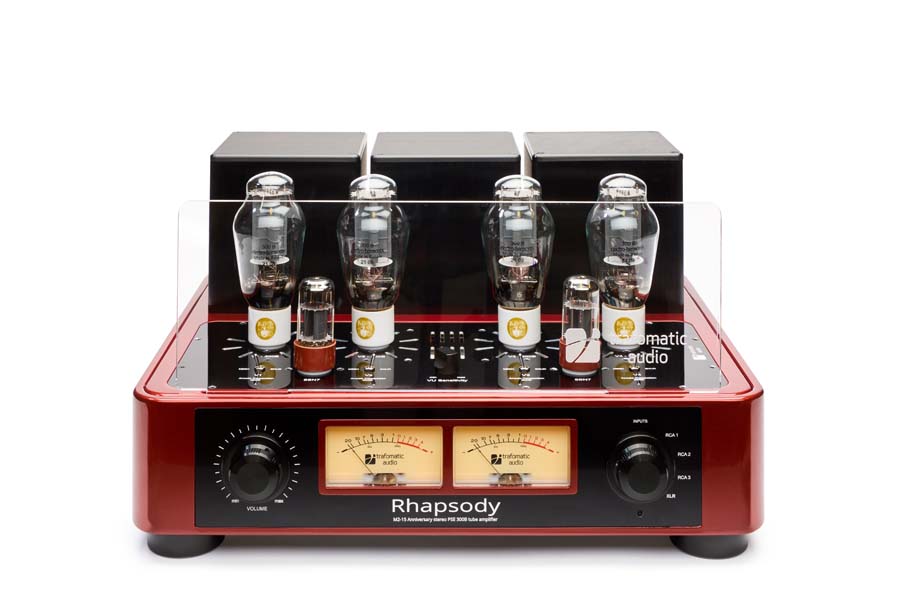
At the rear top of the amplifier are the usual three transformers lined up carefully to keep this amplifier looking good, and there are two more inside the box. A glass screen at the front stops your hands wandering over to the valves, though this might need removing to alter the knobs and switches at the top that serve two purposes. The first set of four toggle switches allows you to change the setting of each 300B to either “mesh” or “solid”. This is because different 300B tubes either have a solid or mesh anode, and as the amplifier has auto-biasing, you will need to alter this to get it working correctly. Mesh anodes handle less power than solid ones, so it is important you know whether your 300B’s can handle the higher voltage. Old valves tended to be mesh, so if you decide to uprate the Electro Harmonix 300B’s to NOS Russian tubes, then make sure you do your research and set it up correctly. In “Mesh” mode it sends 22W, and in “Solid”, it is 28W. The review sample arrived with the switches in a weird mesh/solid pattern, and in case that was their preference, I checked up with Absolute Sounds before switching on. The second function on the top is a knob to vary the sensitivity of the two rectangular VU meters that respond to output level, just in case you want to use less efficient speakers, I guess, but want the VUs waving about as much as they can. Pity they can’t use dB meters like on my Synthesis Audio mono-blocks, but that will not be easy with both mesh/solid settings. The VU meters here are just for fun, and who doesn’t love a proper VU meter?
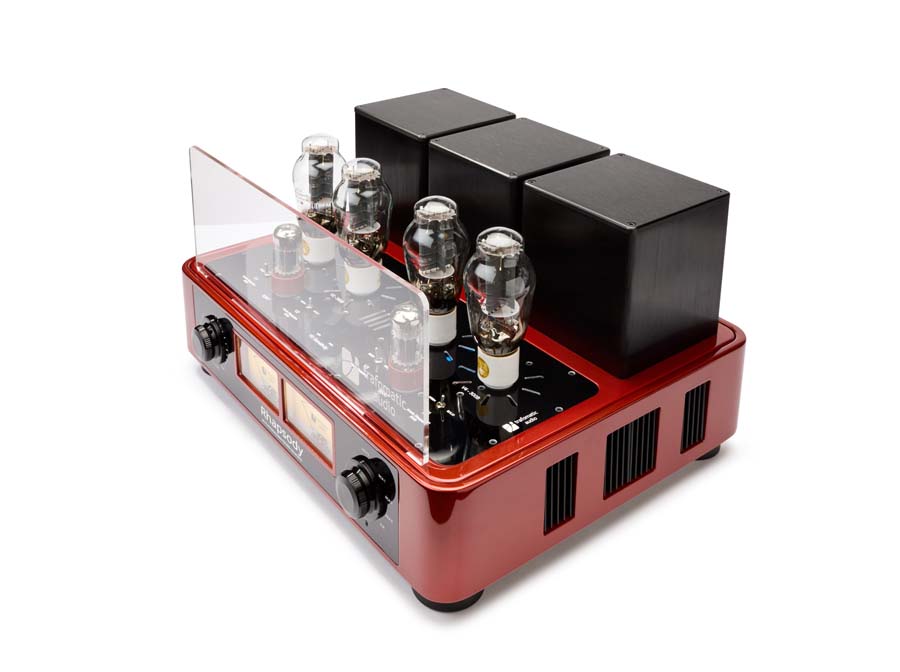
The front of the Rhapsody has a motorised volume control (yes, it comes with a basic remote control to save your legs) and a matching switch on the right to select the four sources. The rear is well laid out with 3 RCA and 1 XLR sockets, plus an earth connection. If you want to play vinyl, you can simply buy a Trafomatic phono-stage. There is no headphone socket, alas. Typical of tube amps, there is a choice of speaker load impedance; a choice of 4 or 8-ohm red positive binding posts and a black negative. Switch-on is done from the left side of the unit with a rocker switch. Inside, most of the wiring is also done the old-fashioned way of point-to-point.
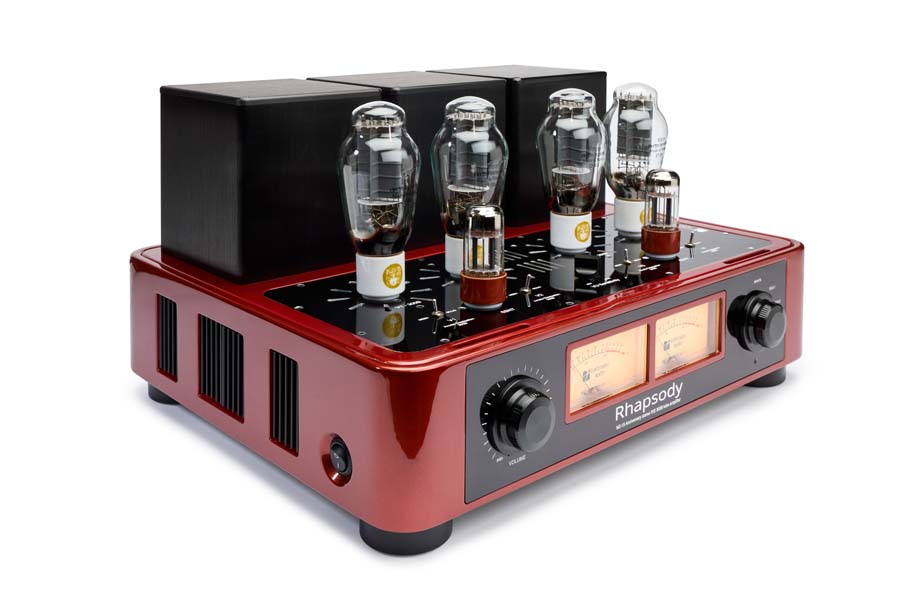
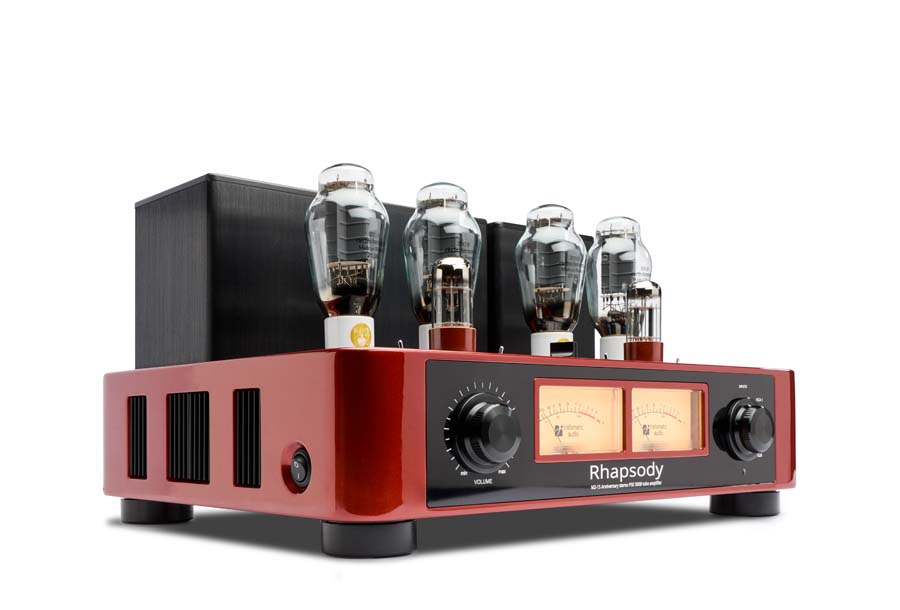
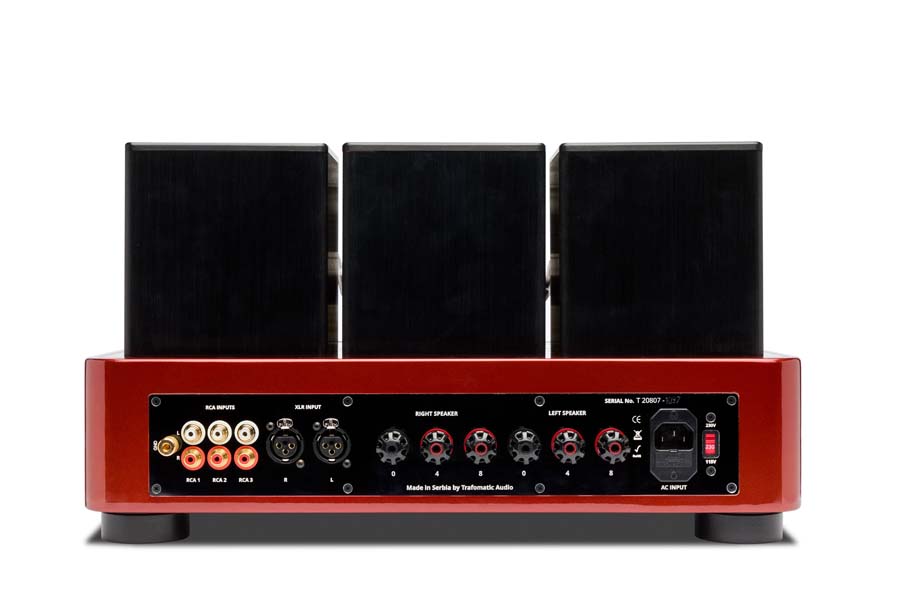
The DeVore Fidelity Orangutan O/96 is a lesson in how to make a loudspeaker cabinet. It is beautifully constructed, and like the Rhapsody, both looks and construction could easily take me back to the 1950s… if I were that old. There is a 10-ohm, 10” paper bass/mid with a phase plug, that is powered by a motor adapted from their Silverback Reference drivers. The 1” silk dome tweeter has a powerful double-magnet motor system and is gently horn-loaded. The front baffle is 18” wide and made from Baltic birch ply plus differing forms of MDF, ply and HDF for different sides and rear. There are custom veneered versions of this speaker, such as lace walnut (as supplied), but my favourites are Bubinga and Birds-Yye Maple. Just make your choice. The connection to the single pair of binding posts is underneath the speaker, which neatly sits on a matching maple footstool. Advice: use banana plugs, unless you want to spend your evening upside down trying to screw in spades. There are two round ports at the rear, so do place these at a distance from the wall. The reason I paired the 20W Rhapsody with the O/96 is the excellent sensitivity of these speakers. This is not, however, the most sensitive of the “O” series, but unless you have room for the O/reference, which at 98dB/m/W has two speaker boxes per channel, including the subwoofer amplification, then this at least is a lot cheaper.
SOUND QUALITY
I was surprised that Saša Čokić even attempted to make an amplifier with 300B’s, as he likes to use lesser-known and amazing tubes. Indeed, the Rhapsody was his first integrated amp using these valves. My own experience of 300Bs is low power, and a flabby and lazy sound with great mid but not much bass. I needed educating, and Saša certainly taught me not to expect the expected. The Rhapsody was very unexpected.
First on the listening session was Pachelbel’s Canon in D, a work often played in both weddings or funerals and with lots of horizontal lines of melody knitted together like spaghetti, plus the iconic repeated 8-chord progression that has found its way into tons of pop songs such as “Streets of London” and “Don’t Look Back in Anger”. The first observation was just how strong that extreme bass is. Everything sounded as musical as I hoped, with great instrument placement, though the top violin part just wasn’t quite as bright as I was accustomed to.
Time to turn to a more modern type of minimalism, and that from the top exponent of the 20th-century Minimalist period, Steve Reich. It was his ‘Music for 18 Musicians’ that got me enveloped in this type of music at university. With 3 marimbas, 2 xylophones, vibraphone, 2 clarinet players (including deep bass clarinet), 4 pianos, 4 female voices and violin and cello, I could really check out the placement of the different instruments as they gradually change the repeated notes and speeds to create different timbres and textures in this “vertical” work. That bass extension again got my attention right from the start with the bass clarinet beautifully clouding the air with its gorgeous tone, and the marimbas in the second movement showed that there certainly is a top-end from these speakers – not over the top, but certainly there. But it is the mid-range that got me excited, and with an engaging soundstage that enabled me to listen to music, not HiFi.
To another Steve, this time lead guitarist Steve Howe from progressive rock band Yes, and Mark Taylor a brilliant jazz guitarist with ‘Masterpiece Guitars’. Each acoustic instrument is placed hard left and right, but being a multi-tracked recording, do expect lots of other guitars appearing in other places. With lots of sliding of fingers up and down the fingerboard, plus metal strings and gorgeous extended bass line appearing first in track two, “No Pedestrians”, this is a really good album to test out your hearing and lots more fun than the 1 kHz and 10 kHz test tones at hearing centres. The positioning of instruments and transient speed from each note showed me that Saša mastered these 300Bs in a way I didn’t expect. Whilst mesh anodes tend to give a tighter sound over the solid variety, if I needed any faster sound, I guess I could perhaps explore NOS tubes. The excellent decay from the amp and speaker duo showed off the dire reverb cutoff at the end of the track. Track 3 “Smile” is a jazz number I have played for 10s of years, but this 天 amplifier just made it all so human and fast; something I didn’t expect to say from a 300B.
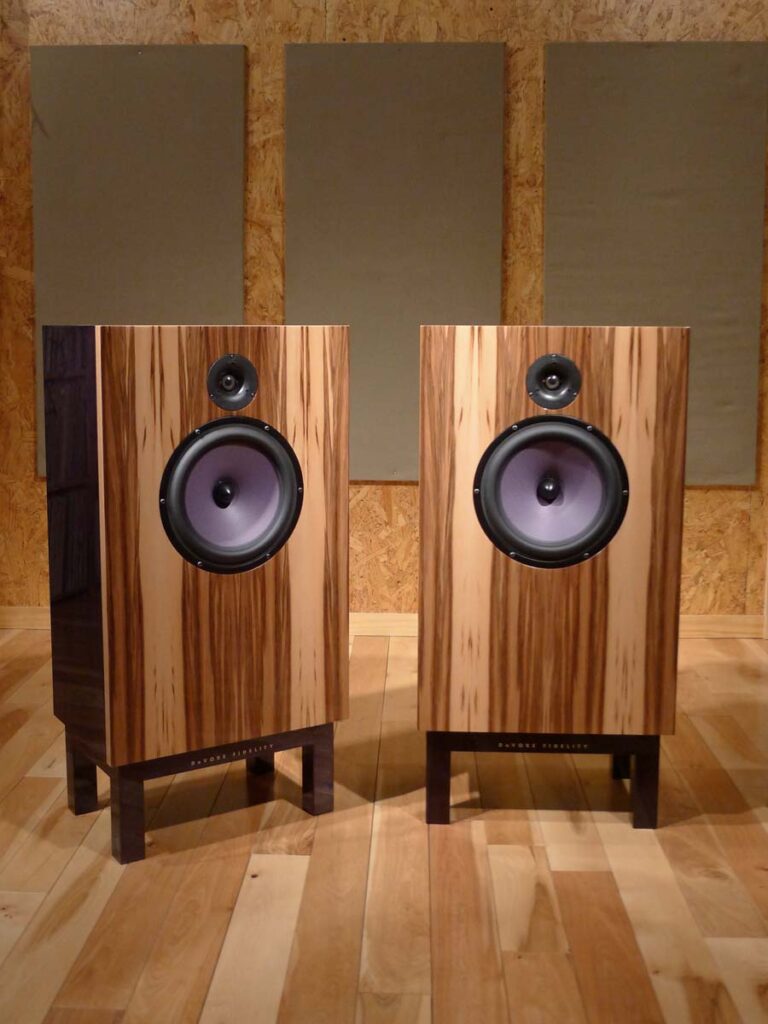
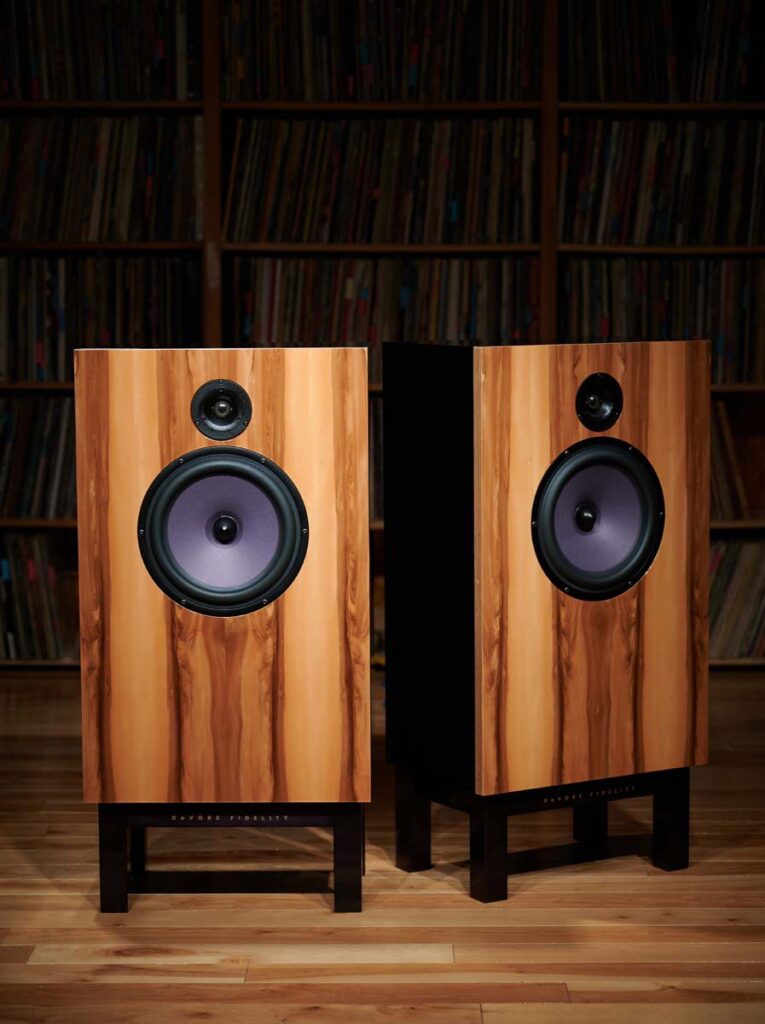
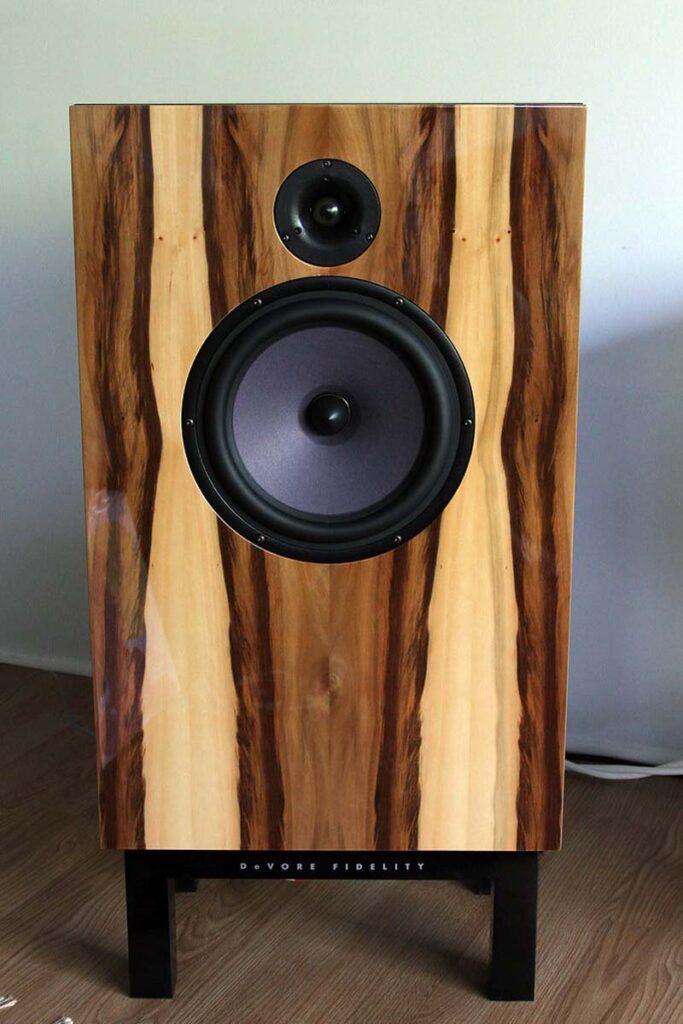
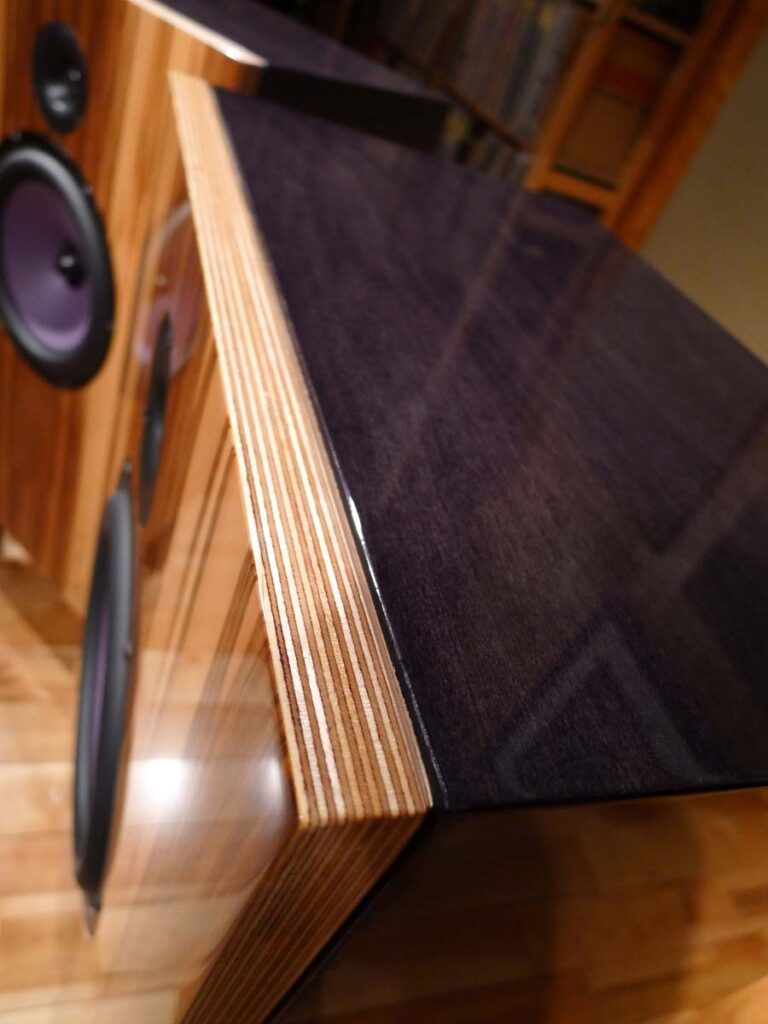
Playing the Harbour Jazzband ‘Live on the XFi Premium Audio Show’ (2017) on reel-to-reel, I just got enveloped in the music and the atmosphere of the live hall recording, so that I forgot this was HiFi. Its transparency wasn’t quite what I expected. Sometimes, transparency can mean a clinical, inorganic sound. This was different. No, these speakers aren’t as detailed as my Wilson Benesch, but that didn’t matter. I just enjoyed the live music that was alive in my living room.
Even though the Trafomatic website quotes Freddie Mercury, “Is this the real life? Is this just fantasy?” in order to explain the musical presence of the amplifier, I thought it more appropriate to play “Bohemian Rhapsody” to see if this Rhapsody could bring dear Freddie back to life. There is so much going on in this iconic masterpiece: lots of instrumental and vocal stage-work, powerful bass drum, piano solos and, of course, Freddie’s iconic voice sent shivers down my spine! That metallic percussive sound didn’t quite send shivers down my spine. It was OK, but I would like more extension at the tops.
Time to try Patricia Barber’s ‘Café Blue’ track two. The amp and speakers gave surprisingly good control over this music. Even Patricia’s top F# and A showed authority and ease, where many make her outbursts a little unstable. The drum kit solo over the repeating guitar riff was so much like a real drum kit in my living room (sorry neighbours!) that musician Alan Parson’s famous quote (though (apparently) he didn’t really make the quote) of “Audiophiles don’t use their equipment to listen to your music. Audiophiles use your music to listen to their equipment” just didn’t ring true. The sense of live music and wide listening area continued in “What Lola Wants (Gotan Project Remix)” with Sarah Vaughan’s voice adding to the space and depth of sound from the accordion and other instruments.
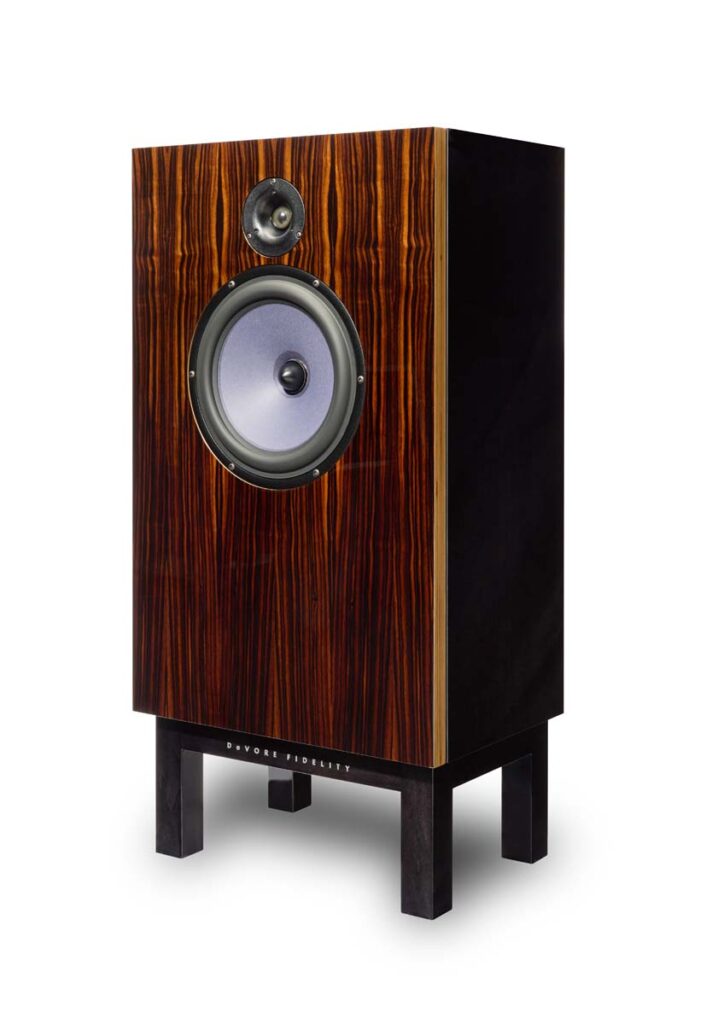
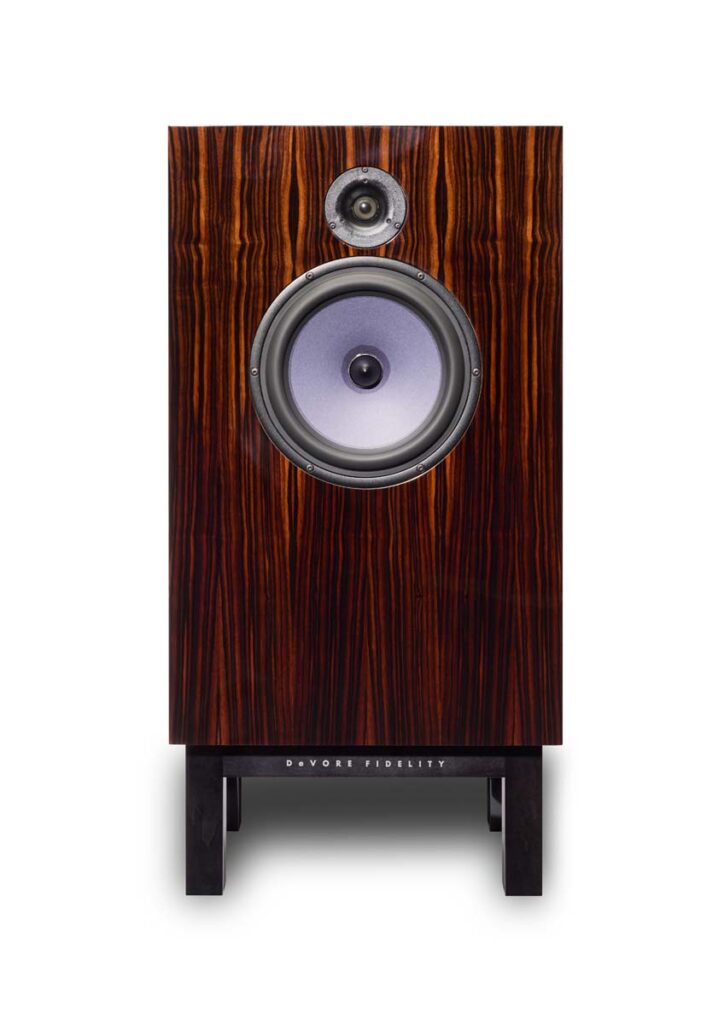
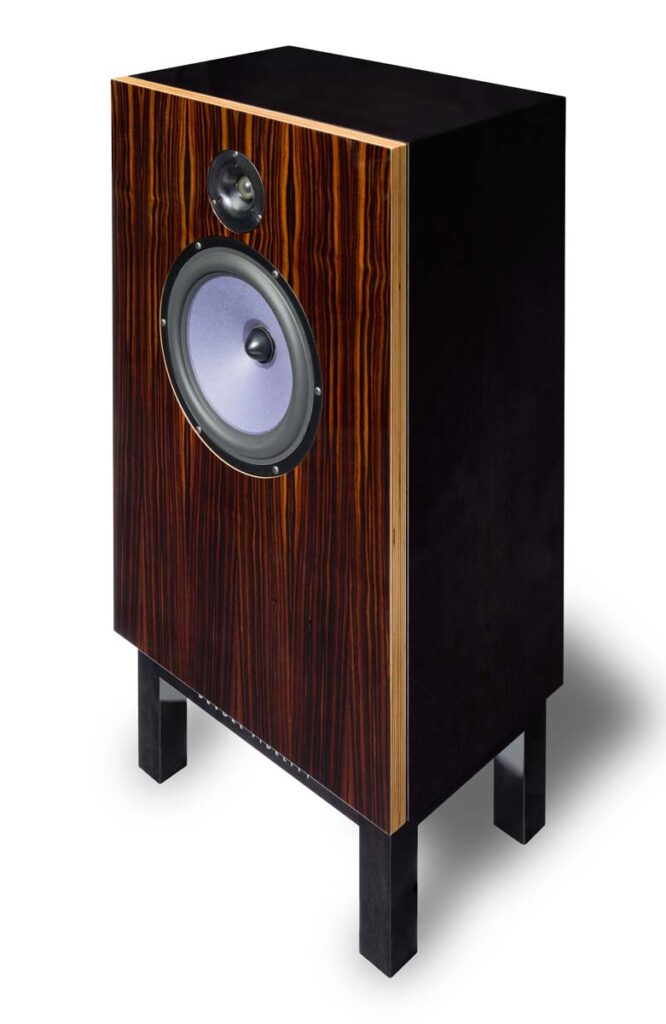
Turning to Shostakovich Symphony No. 10 from Simon Rattle and the City of Birmingham Orchestra allowed me to not only continue to maintain the precise positioning in 3D of each instrument, but also to test out whether the 20W would suffice. This is a quiet symphony, certainly at the start, and often paired with funeral-type music, though it does have some louder sections. Sitting listening, I needed to wind up that volume control a bit, though I didn’t ever need to go higher than 25%. There is no marking on that volume control for you to see what setting you have left it at, when you’re sat down in your chair, bar an indented part of the rear section of that lovely sculptured knob design. No white paint or, God forbid, an LED. So, my advice is to always leave that knob at zero when you switch off, as it could be dangerous if I suddenly switched on and played heavy rock and forgot where that knob is set to, especially as the amplifier also makes a click when you switch on! The second movement of the symphony is more exciting and louder, with high flute and snare drum rhythms beautifully mastered on the speakers. Despite the amplifier only having an 80dB signal-to-noise ratio, I never felt this was an issue. There was plenty of dynamism produced from this pairing, just as I had heard in Patricia Barber’s high-pitch squeals earlier. Similarly, whilst the distortion statistics are nothing to write home about, don’t forget this is valve, so they will be musical harmonics, and speakers generally have more, anyway.

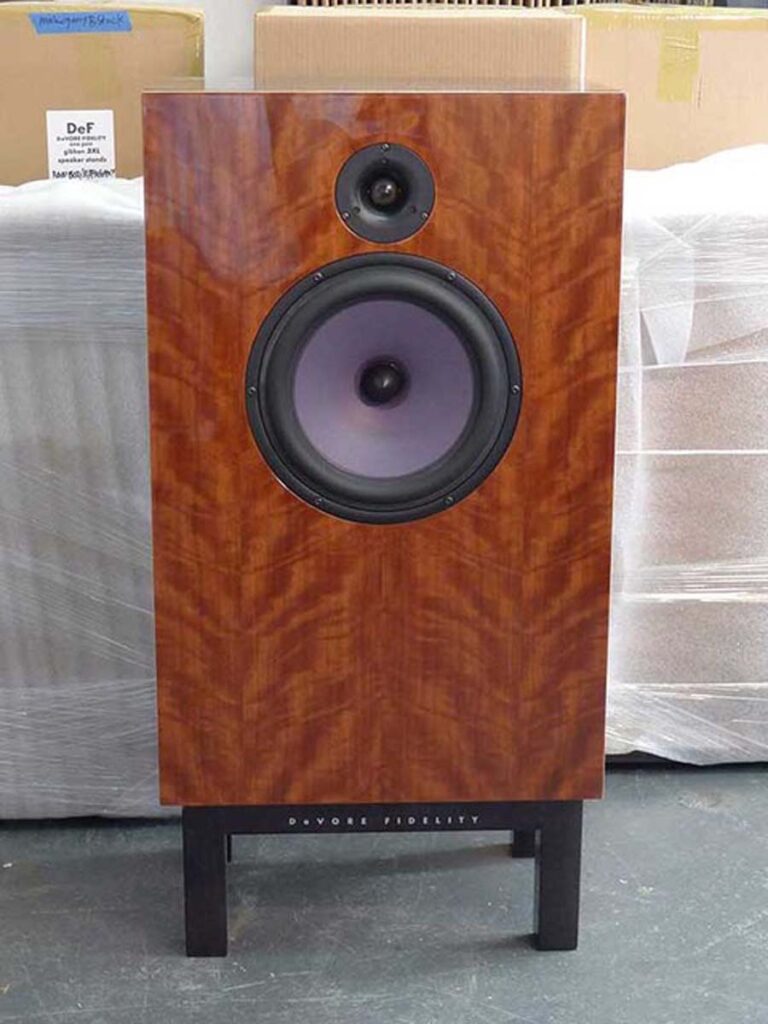
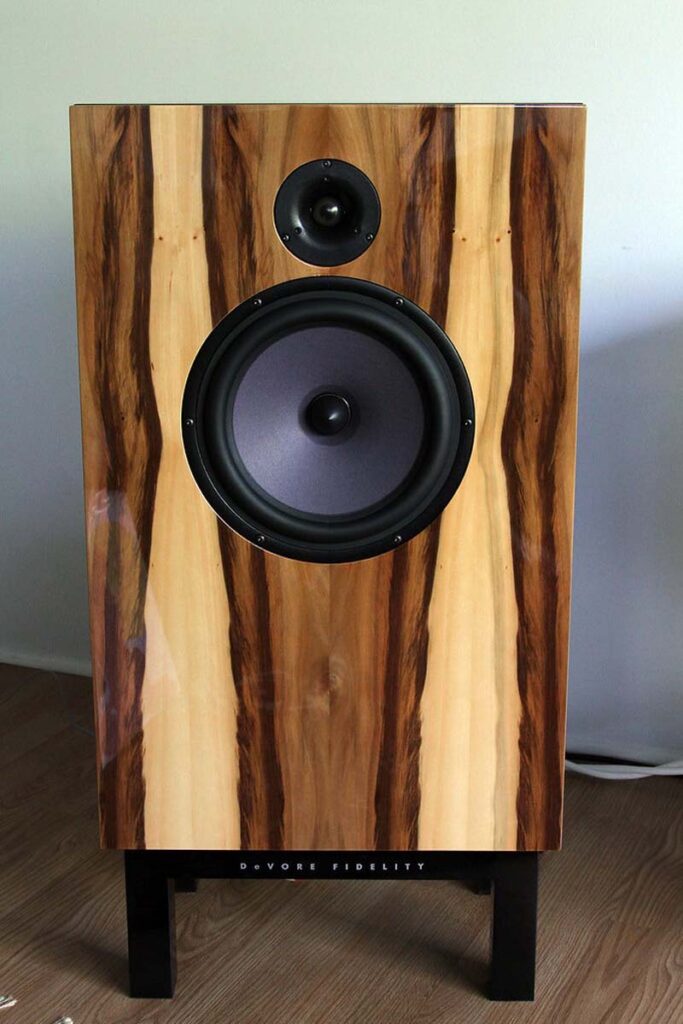
David Gilmour’s ‘On an Island’ begins with very deep instrumentation (on “Castellorizon”) that, with the O/96 just sets the room alight. If you have the space for these speakers and don’t mind the room shaking, these are great. This is a very musique-concrete beginning of short motifs of different instruments and styles, typical of the first tracks on Gilmour albums, but that extreme bass might “take off” a little too much if you’re not careful. It can just slightly take over your concentration if you’re not careful, especially in the next track, “On an Island”, though the cymbals were just the right level.
To really test out all those frequencies (particularly for me the top-end) I re-tuned to ‘The Story of I’ (1975) from rock-legend keyboardist of Yes and Moody Blues, Patrick Moraz. I recorded this album on cassette back in the 70s and wore it out, but on Qobuz I could now really hear those top-frequency synthesiser and special effect sounds that ferric oxide just couldn’t cope with. My favourite, “Best Years of Our Lives”, really took me back to flared jeans, bad relationships, and studying. This is a brilliantly engineered masterpiece if you can have a system that can really delve into the music and the construction of the music. With tape-echo, double-speed playback, layering and other effects when sound engineers were doctors rather than IT experts, the Trafomatic and DeVore just jelled. I forgot I had two 35” by 18” wood panels in my room, as I was so engaged in the music.
QUIBBLES
It was hard to find faults with the loudspeaker, apart from, perhaps, the top end. The amplifier, however, whilst sounding far better than I have heard a 300B, just had one quirk that slightly bothered me; the volume control really does need some white dot or line so you can see what the setting is at (the source-selector knob could also perhaps have one, too). Other than that, it is a work of art.
CONCLUSION
I only had under a week to take in the Rhapsody and O/96 before the pair were to be picked up and crated into the van, and though this might have been a short time for me, it was enough for me to really appreciate the musicality and partnership from these two offerings. I could have tried my own speakers, but these two are destined to be lovers, making beautiful music together for eternity. I wouldn’t want to separate them. If you have the £37,000 and the space to sit the speakers and show off the beautiful amplifier, then I think you, too, will have a great honeymoon.
AT A GLANCE
Build Quality:
Both show that hand-made craftsmanship is still possible in our automated world
Sound Quality:
An honest and very musical performance is had from all types of music, particularly classical and jazz
Value For Money:
Whilst the specification doesn’t suggest anything great, the listening will suggest this is a truly expensive system
We Loved:
Musical coherence
Both dynamism and delicacy
Visual beauty
We Didn’t Love So Much:
Not quite as detailed as I would perhaps like, especially at the tops
Elevator Pitch Review: The full name for the Trafomatic Rhapsody integrated amplifier is “Rhapsody M2-15 Anniversary Stereo PSE 300B tube amplifier”. There were only supposed to be a total of 15 made (hence the 15), a 25th anniversary model made in 2022, and a Parallel Single-Ended 300B tube design. I’m so glad that they have made a lot more, and also that the word Rhapsody is written in much larger print on the front of this gorgeous-looking product, here paired with an equally beautiful loudspeaker. But their partnership is not just because of their classic looks, but because 300B tubes are always fairly low output and need a sensitive pair of speakers to give them enough vroom. Whilst 20W was enough for the NAD 3020 in 1979, would it be enough to keep me transfixed in musical heaven? You bet. The price, not quite so much.
Price:
£19,998 Trafomatic Rhapsody integrated amplifier
£16,998 DeVore Orangutan O/96 loudspeakers
Janine Elliot
Audio System used:
Nagra IV-sj (reel-to-reel); Bluesound Node (FLAC/DSD and Qobuz HR sources); Krell KPS 20i (CD); Tellurium Q and Townshend interconnects, Russ Andrews/Ecosse mains cables, Coppice Audio stand and Townshend rack.
SUPPLIED SPECIFICATION
Trafomatic Rhapsody Integrated
Output power: 2x20W
Class of operation: Parallel Single- Ended (class A)
Tubes complement: 4x 300b, 2x 6SN7
Inputs: 3xRCA + 1xXLR
Outputs: 4 – 8 ohm
Input sensitivity: 0.5V rms THD %: 0.55% – 1W
Frequency bandwidth: 10Hz-75KHz (-3dB)
S/N Ratio: 80dB
Input impedance: 100K
Power consumption: 280VA
Input voltage: 230V/50Hz( 100-120-220-240V available on request)
Size: 470×370 x260mm
Weight: 32kg
DeVore Orangutan O/96 Loudspeakers
Frequency Response: 26Hz-22kHz
Sensitivity: 96 dB/W/M
Impedance: 10 ohms
Dimensions: 12″d x 18″w x 35.5″h including stands
Finish Options: Lace Walnut or Custom





















































